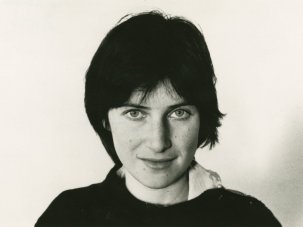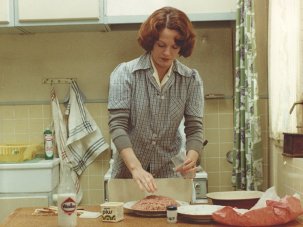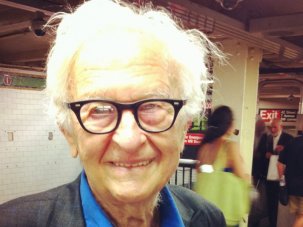Web exclusive
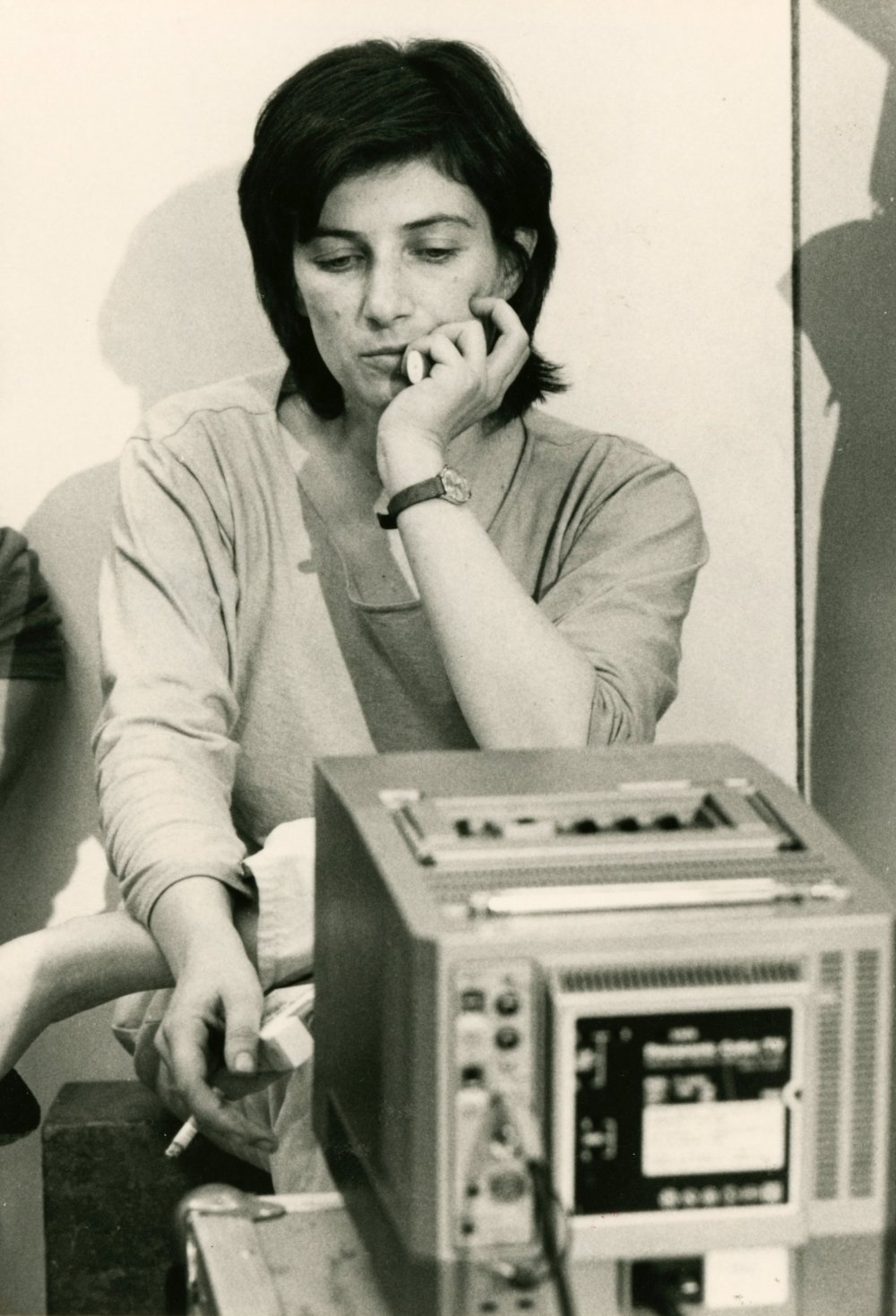
Chantal Akerman
The first shot of my movie Actress is of my star, Brandy Burre, doing the dishes with her back to the camera. The shot is a visual quotation, a direct reference to Chantal Akerman’s 1975 domestic masterpiece Jeanne Dielman, 23 quai du Commerce, 1080 Bruxelles. Akerman’s influence on me is absolute; I could only hope to create something with an ounce of the bravery and cinematic urgency that her films possess. She was one of my biggest cinematic heroes. Monday night she apparently committed suicide at the age of 65. This loss feels spectacularly present.
The first Akerman film I saw as a student was Je, tu, il, elle (1974), a vital piece of performative cinema, and it electrified me. The ambiguous, elastic possibility of collapsing the real and the staged into single images, the relationship between raw self-portraiture and an exploration of the crafted self, the radical use of time passing onscreen as a way to transform everyday experience – it was all there. Akerman was an expressive, fearless filmmaker and this first exposure changed my life. Virtually every thought I’ve had about movies since has been influenced in some way by my first encounter with Akerman’s way of seeing.
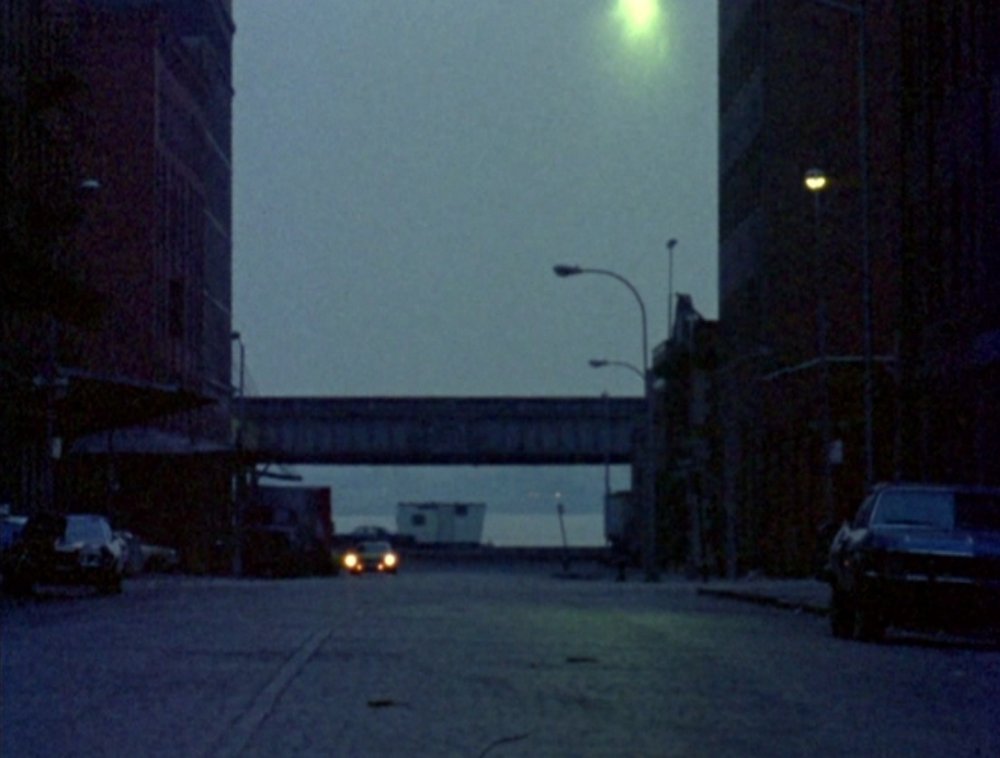
News from Home (1976)
I soon became obsessed with her work, which was somewhat difficult back when her movies weren’t so widely available. I consider News from Home (1976) to be one of my favourite films of all time. I’ve watched it again and again, in every format I could find it, trying to listen to what it tells me about composition, duration, emotional engagement via stripped-down repetition and creating maximal effects with the most minimal of means. After the twin towers fell, the first movie thing I watched was the ten-minute, uninterrupted ferry shot of the camera drifting away from lower Manhattan that closes the film. Before September 11th, this was perhaps my favourite long take in all of cinema. After the tragic reshaping of my (and sometimes Akerman’s) adopted home, the shot is haunting beyond words.
In graduate school, at the City College of New York (where Akerman would later teach), I told my bemused professor that I wanted my work to feel like Chantal Akerman’s films. That was the highest order I could strive for. I would never succeed, but she is always my mountaintop. She’s rightly cited as a maker of landmark feminist work, but I was mostly transfixed by her formal rigour. Facile questions about the relationship between documentary and fiction meant little in her films. Truth and construction were collapsed into a personal, wildly original cinematic space.
I met her briefly after a gallery screening of a video piece she made about the U.S.-Mexico border. I came from North Carolina with big ambitions and had only been in New York for a few months. After we had a brief chat I gave her a spontaneous, somewhat awkward hug. I couldn’t help myself. She was gruff but polite and she wished me well. My hero was a real person. I felt connected to my own dreams in a new way.
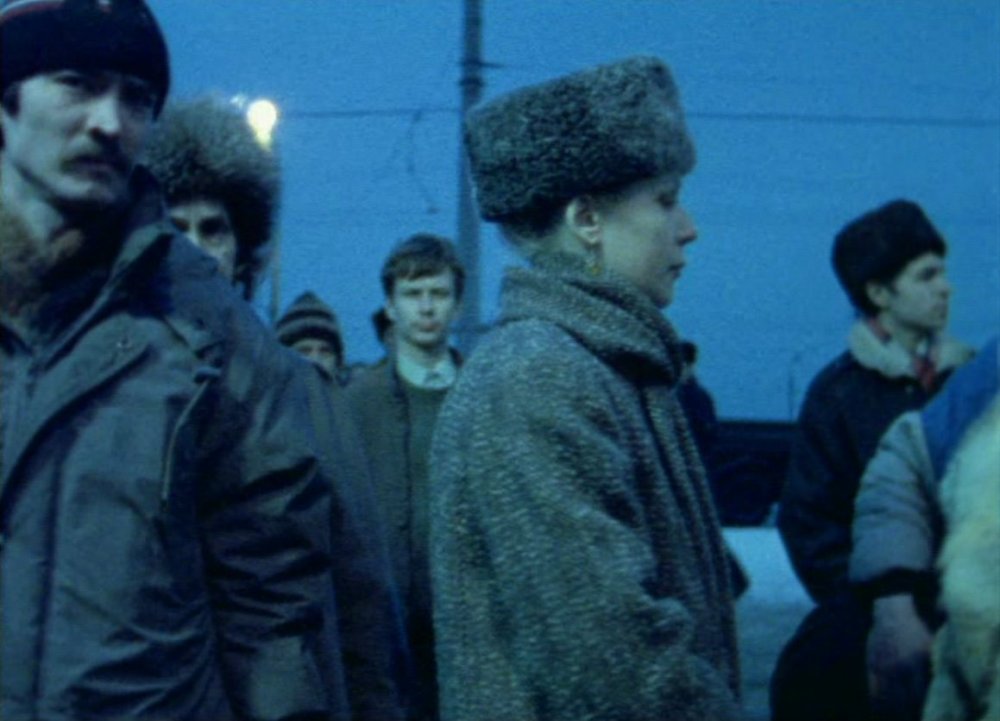
D’Est (1993)
I spent years trying to find a copy of her film D’Est (1993), which was hardly available at the time. It became a kind of fixation. Her films felt that way to me – scratches to overwhelming itches. When I finally saw it, I couldn’t believe it could exceed my impossibly high expectations. I’d read a story about her watching dailies with her editor as the haunting faces in D’Est tracked by, clapping when she wanted him to make a cut. She made films where the act of creating an edit was always a monumental choice. In structuralist work like Hotel Monterey (1971), Jeanne Dielman, News from Home, Les Rendez-vous d’Anna (1978) and others, the relationship between expansiveness and precision is a marvel. Her films linger way past what the viewer expects and then the cut is an eruption of meaning. As an editor, I learned from Akerman that you have to justify every slice in your material and that not cutting can be an electrifying editing choice.
Akerman was that kind of genius who forged and mastered a specific style, yet never rested on her own aesthetic discoveries. She made a series of genre-experiments, like the musical comedy The Golden Eighties (1986), the relationship drama Night and Day (1991) or the romantic dramedy A Couch in New York (1996), gambles that always felt to me like personal breakthroughs. It was thrilling to watch an artist explore her medium with such fearless gusto. More recently she took on Proust (La Captive, 2000) and Conrad (Almayer’s Folly, 2011). It’s fitting that a filmmaker often associated with the identity politics of the mid-1970s could slip into so many different skins.
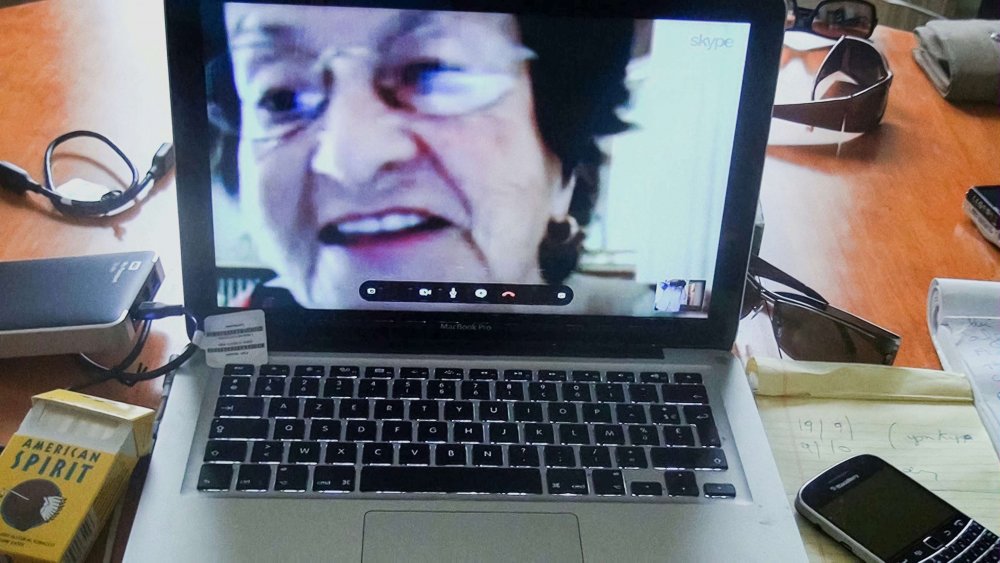
No Home Movie (2015)
She had success at such a young age (Jeanne Dielman was released when she was just 25 years old) that Akerman seemed from afar to have a different relationship with the kinds of anxieties about failure that can sometimes cripple an artist. She was a brave aesthete, always willing to push considerably past perceived boundaries. This sense of impenetrability, however, is likely just a matter of me projecting a desired trait onto my hero. There were conflicting reports earlier this year that her latest film, No Home Movie, a nonfiction work about the death of her mother, among other things, was met with a smattering of boos at its press screening in Locarno. She was reportedly suffering through severe depression after the passing of her mother. The thing with suicide, if that was indeed the cause of her death, is that we are almost pathologically wired to look for answers. I’d like to not do that here.
I didn’t know Chantal Akerman but I had a version of her in my imagination, in the way that we sometimes personify our influences and turn them into spirits that whisper to us when we need them. Now this person is gone; this ghost friend of mine, who has been with me for my entire cinematic life, has erased herself from the real world. I believe she will remain with me, but I can’t be sure.
There was always a sense of unspoken tragedy infused in her images. The unseen ghosts in Hotel Monterey, the quietly pained faces of immigrants in D’est or From the Other Side (2002), the banal domestic rituals in Jeanne Dielman. This quotidian sense of pain was presented as belonging to all of us; we could see it and almost inhabit it with the cinematic time Akerman provided for us to observe. Time passes and it’s good to stare at what’s in front of us. The rich complexity of our daily experience will reveal itself if we look at it long enough. Chantal Akerman gave us the chance to gaze.
-
The Digital Edition and Archive quick link
Log in here to your digital edition and archive subscription, take a look at the packages on offer and buy a subscription.




